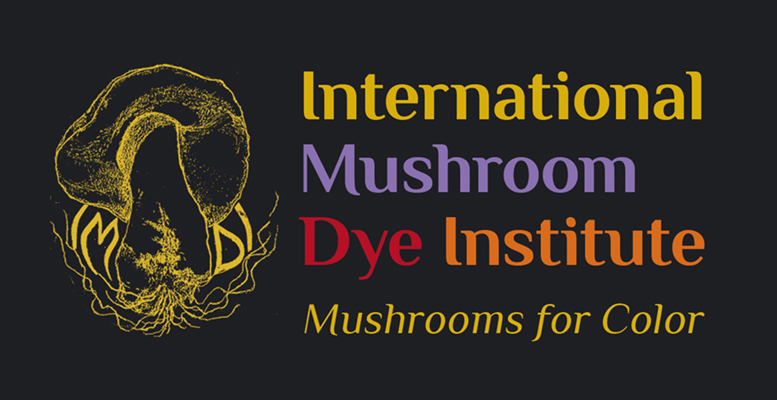In the beginning – 1968, as near as any of us can remember – multi-faceted artist Miriam C. Rice, whose practice included sculpture, batik, and printmaking, was teaching children about natural dyes in the children’s art classes at the Mendocino Art Center when she began experimenting with natural dyes to make inks for her own block prints. During that time, encouraged by local mushroom-hunting friends, she was invited to go on a mushroom foray, led by the late eminent mycologist, Dr. Harry Thiers, to learn about the identification of local mushroom species.
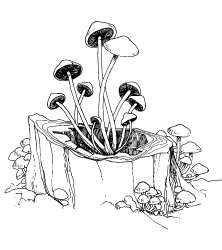
Shortly thereafter, always eager to combine the best possibilities of both worlds, Miriam took a clump of sulphur yellow Naematoloma fasciculare mushrooms and tossed them into a dye pot with a bit of wool yarn. Fortunately (for all of us), this action resulted in a clear bright lemon yellow dye and voilá “mushroom dyeing” was born!
1972 was a bumper crop year for mushrooms in California, and Miriam experimented with everything she found, attending all of the mushroom fairs and forays to identify the mushrooms she was using, while gradually building up a vast collection of labeled mushroom dyed fiber samples.
Let’s Try Mushrooms for Color
In the very early 1970s, a friend and student, Janet Hope-deVries, introduced Miriam to Robert and Christine Thresh, the owners of a small publishing company in Santa Rosa, CA. The story of this historic introduction is told in this article by Janet Hope-deVries in the first IMDI newsletter, the International Mushroom Dye-Gest, which appeared in 2000. The connection evolved into a little book called Let’s Try Mushrooms for Color. Published by the Thresh Publications in 1974, it has indeed “mushroomed” into something above and beyond all expectations!
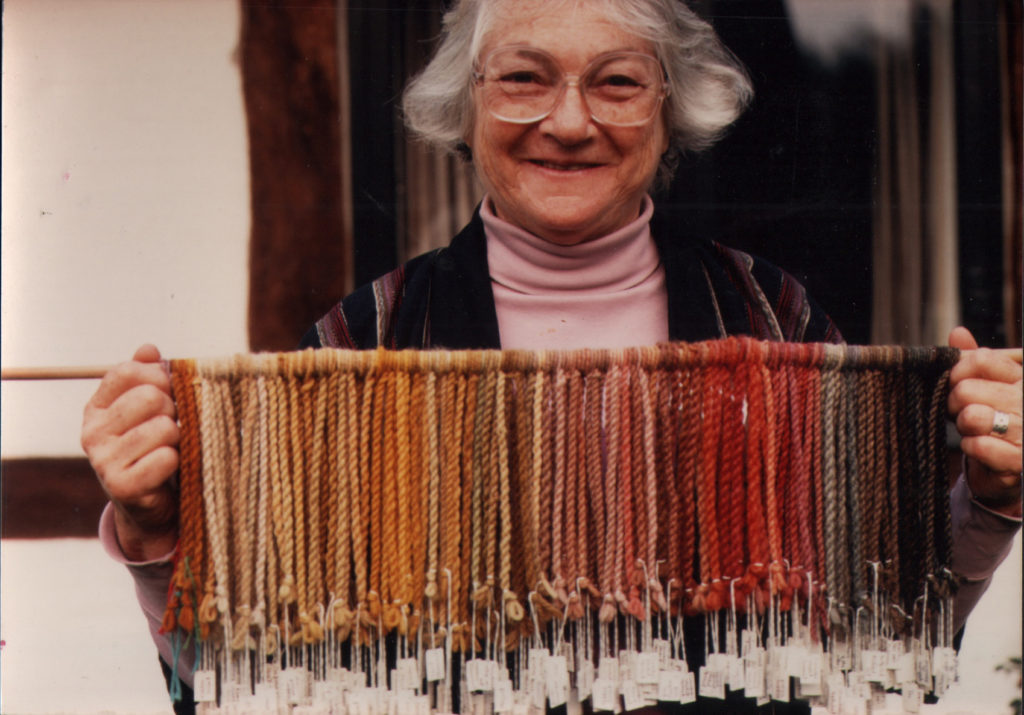
In 1973, a weaver friend encouraged Miriam to contact Thresh Publications in Santa Rosa, CA, a small publisher which had done several lovely little books on spinning, dyeing, and weaving, and show them her dye samples. Robert and Christine Thresh encouraged Miriam to write up her experiences and experiments. While teaching a class in textile arts at College of Redwoods in Fort Bragg, CA, she introduced the concept of using mushrooms for natural dyes. She encouraged the weavers by using simple looms to weave entirely with mushroom dyed yarns. Many of these pieces were photographed and appeared later in her little book.
Meanwhile, the Threshes introduced Miriam to Dorothy Beebee, who agreed to do pen-and-ink illustrations of the mushrooms for Miriam’s book, thus beginning a long, flourishing, working relationship. Dorothy had been doing natural dyes and spinning since 1959, while working as a freelance scientific illustrator, and this was a natural combination of the best of both worlds for her too!
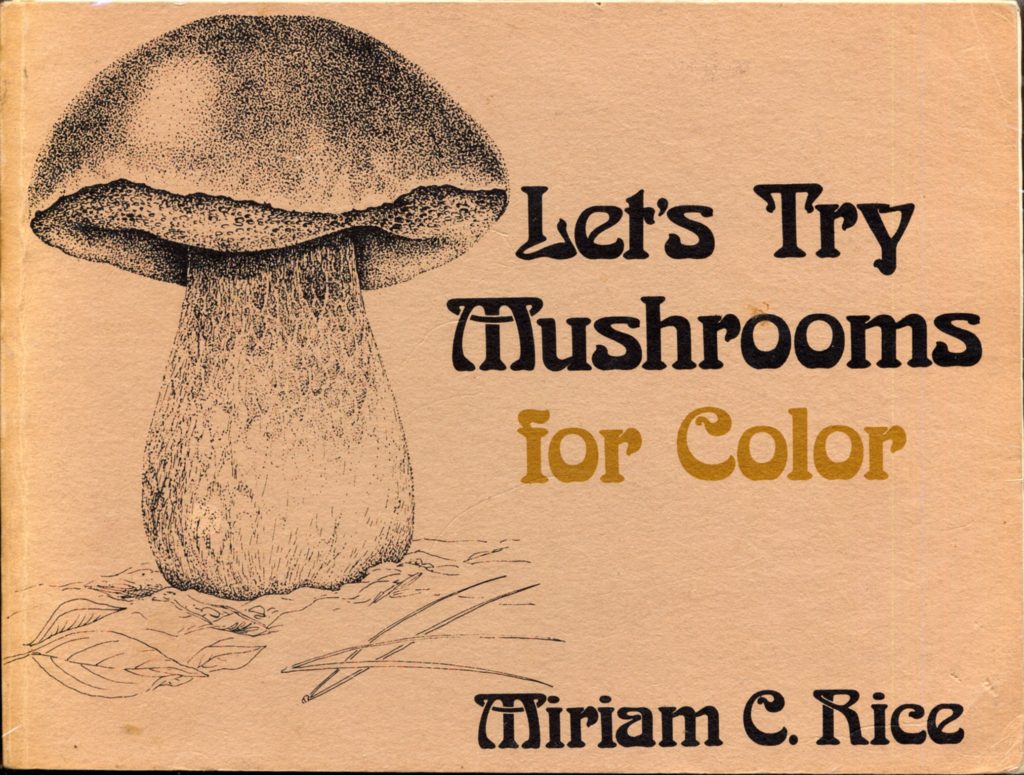
So, the wonderful little book, Let’s Try Mushrooms for Color by Miriam C. Rice, was published by Thresh Publications, Santa Rosa, CA in November 1974, while Miriam continued to experiment further and teach workshops in mushroom dyeing. A museum display of the book and its mushroom dyed weavings was conceived, and the exhibit “Natural Dyeing with Fungi” was opened in Willits, CA in August 1976.
Miriam continued to discover even more brilliantly hued mushroom dyes. In late 1974, while the book was literally going to press, she discovered astonishing rose, burgundy, and purple hues emerging from a “mysterious” mushroom found growing under the Bishop pines in Mendocino County. Samples of these mushrooms, (tiny remnants literally scraped out of the dye pot), were sent to be microscopically identified in April, 1974 by Dr. Daniel Stuntz and Dr. Susan Libonati-Barnes at the University of Washington. They were identified as members of the genus Cortinarius.
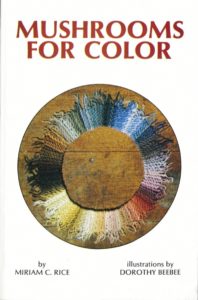
Mushrooms for Color
Lovely purple, blue, and green hues emerged from other mushrooms, continuing to enchant and inspire weavers far and wide, and this widely expanded palette of extraordinary dye color evolved into a new book documenting Miriam’s expanded research. Mushrooms for Color was published in 1980 by Mad River Press, Eureka, CA. A contribution on the chemistry of the mushroom pigments by Dr. Erik Sundström was added in a later edition.
In the Summer of 1980, the first International Mushroom Dyes Textile Show – FUNGI and FIBERS,” was announced. This exhibit became “international” when a weaver from Canada contributed one mushroom-dyed piece!
Miriam continued to experiment with many new mushroom dyes. She revised her thinking on the toxicity of many mordants and soon advocated the use of only alum and iron mordants.
Videos
Produced in 1988, the video, Mushrooms for Color: Dyeing with Fungi, chronicles more than twenty years of her research and offers a fascinating glimpse into her methods for extracting the full spectrum of colors she discovered, as well as the excitement generated by her finds in the fiber arts community worldwide. And 1993 she produced a second video, Mushrooms for Paper: Papermaking with Polypores, a step-by-step guide to making colored papers from mushrooms.
Another video, Try It and See, captures the early history of mushroom dyeing as told by Dorothy Beebee, Miriam Rice’s dear friend and close colleague, the illustrator of each of her books. Dorothy gives us a behind the scenes look into the discovery of mushroom dyes, the expansion of their work into two additional books, and her thoughts on the future of mushroom dyes. Many dyers today may not know that it all began in the 1960s in Miriam’s children’s art classes. Produced by Martin and Myra Beebee in 2024. Premiering at the Mendocino Film Festival in June 2024 and available here thereafter.
Färga med svampar

Dorothy had shared her mushroom dyeing enthusiasm with her friend from college days, Carla Sundström, and her husband Erik, sending these avid amateur mycologists a copy of Miriam’s first book when it was published in 1974. This in turn inspired the Sundströms to experiment with mushroom dyes in Sweden, beginning a lively correspondence and exchange of knowledge across the oceans, which continues to this day. The experiments by the Sundströms evolved into a book about the comparable mushroom dyes of Sweden, and, for the sake of continuity in the mushroom dye research, Dorothy was invited to Sweden to illustrate this new book.
In 1982, the book Färga med svampar by Carla and Erik Sundström was published by ICA bokförlag, Västerås, Sweden. This book was inspired and based on the work by Miriam C. Rice. The resulting enthusiasm by the fiber art conscious Swedes led to their invitation to sponsor a second International Fungus & Fibre Symposium in 1983, this time in Stockholm, Sweden.
Skapa av Svampfärgat Garn
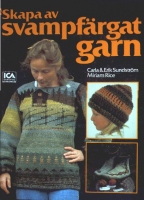
After the 1983 Symposium, the Sundströms collaborated on a book with Miriam, a celebration of the many lovely mushroom-dyed fiber art pieces woven, knitted, felted, and crocheted over the ten years of mushroom dye experiments in North America and in Scandinavia. Skapa av Svampfärgat Garn by Carla and Erik Sundström and Miriam C. Rice, was published by ICA bokförlag in 1984.
International Mushroom Dye Institute (IMDI)
The authors then jointly decided to invest a portion their royalties from Skapa av Svampfärgat Garn into the formation of a non-profit organization for educational purposes and the promotion of mushroom dyes. Thus, the INTERNATIONAL MUSHROOM DYE INSTITUTE was established in 1985.
The IMDI was founded to encourage the use of fungal pigments and to further research on their extraction and employment; to encourage research on cultivation of especially desirable fungi; and to financially aid artists and researchers to participate in the international symposia and exhibitions.
The board of the IMDI has been very stable over the years. The first meeting in 1985 included Miriam Rice as Chairperson, Mary Cardiff as Treasurer, Susan Tanaka as Secretary, Dorothy Beebee, and Michael Crofoot. In 1988, Andrea Marks replaced Susan Tanaka as Secretary, and TigerLily Jones replaced Michael Crofoot. In 1998, Nancy Denison became Secretary, Andreya Marks became Vice-Chair, and Dorothy Beebee became Historian & Newsletter editor.
The current board is made up of Felicia Rice, Miriam’s daughter, as Chairperson, Dorothy Beebee as Vice-Chair and Historian; Nancy Denison as Treasurer, Julianna Schleuder as Secretary in 2011, Andreya Marks, and Alissa Allen. For complete information on the board, visit this page.
Mushrooms for Paper
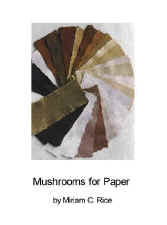
While experimenting with mushroom dyes back in the 1970s, Miriam lit on the possibility of making paper out of the fungal detritus left over from the dyes. Always a passionate advocate of recycling, this seemed to be the natural solution for disposal of the fungal residue from the dye process.
She experimented with a few mushrooms for paper, but the fever of the dye experiments prevailed overall until 1985 when she introduced the concept of papermaking from fungi in Denmark at the 3rd International Fungi & Fiber Symposium. Papermaking workshops were conducted in 1988 at the 4th International Fungi & Fiber Symposium in California and again in the 1990 Symposium in Norway.
Miriam published her experiments in the Winter 1991 and 1992 issues of “Mushroom, the Journal of Wild Mushrooming.” These articles were followed in 1993 by “Mushrooms for Paper: Papermaking with Polypores,” a step-by-step video guide to making truly gorgeous papers from mushrooms as demonstrated by Miriam herself.
Mushrooms for Painting
Well, all of that lovely paper just invited painting, and in 1992 Miriam began experimenting with making watercolor paints from the mushrooms. The results of her experiments were introduced in a 1999 workshop at the 9th International Fungi & Fiber Symposium in Hønefoss, Norway and she continued to enthusiastically experiment with all of the new possibilities in mushrooms for dyes, paper, and pigment.
Mushrooms for Drawing
For some time, Miriam had been thinking of using the mushroom pigments in some form of medium for artists to use in drawing and sketching to supplement the watercolor paint. Months of experiments resulted in a drawing medium called “Myco-Stix™,” which Miriam formally introduced in August 2001 at the 10th International Fungi & Fiber Symposium in Rovaniemi, Finland.
Thanks to Miriam’s initial remarkable research and experimentation, mushroom dyes, mushroom papermaking, watercolor pigments, and Myco-Stix™ are now being used, taught by fiber artists worldwide, and have been consistently referenced in mycology books and by fiber artists for over fifty years.
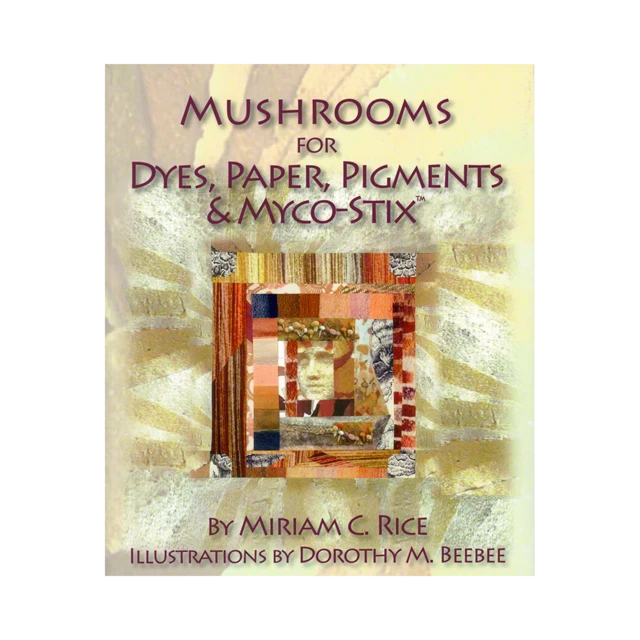
Mushrooms for Dyes, Paper, Pigments & Myco-Stix™
Find a “compendium” of all of her research in Miriam’s last book: Mushrooms for Dyes, Paper, Pigments & Myco-Stix™. Read book review by Julie Beeler of the Mushroom Color Atlas here.
$36.95
Domestic orders from Fungi Perfecti
International orders from The Net Loft
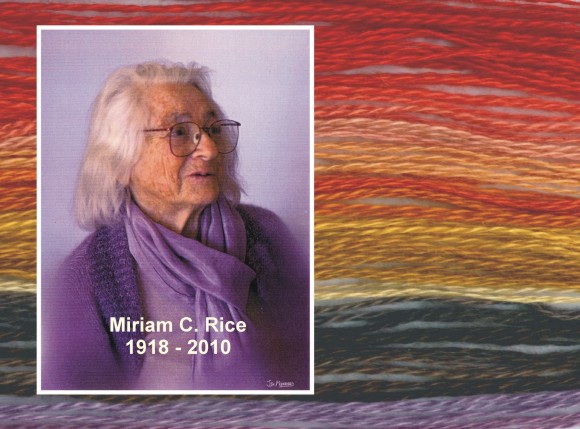
Sadly, Miriam C. Rice passed away in Mendocino, CA in August, 2010.
